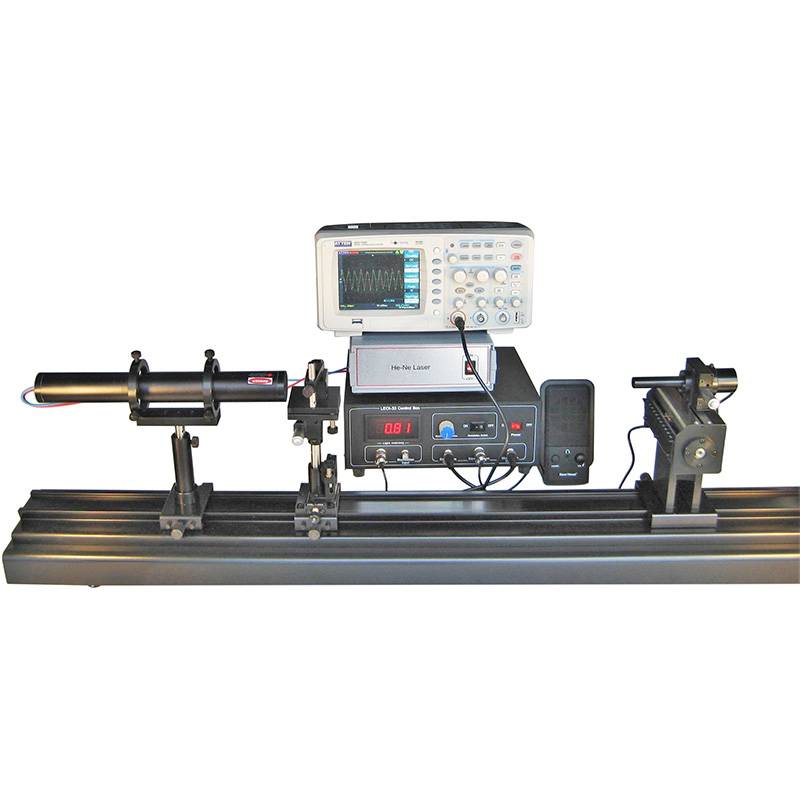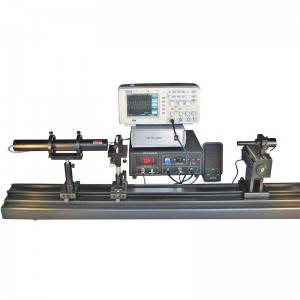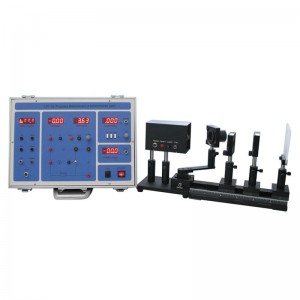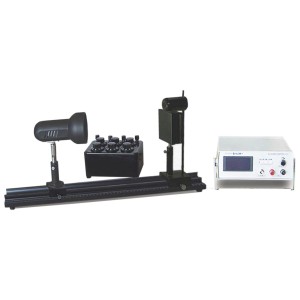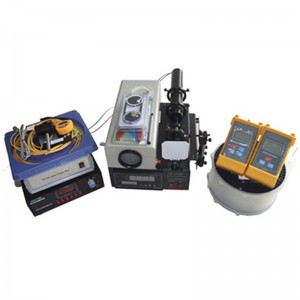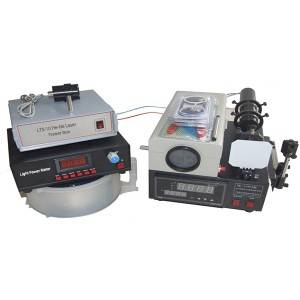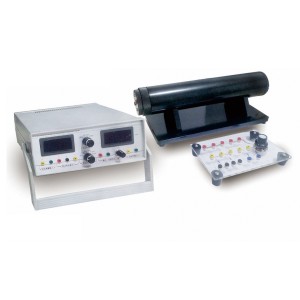LPT-2 Experimental System for Acousto-Optic Effect
Experiment Examples
1. Observe Bragg diffraction and measure Bragg diffraction angle
2. Display acousto-optic modulation waveform
3. Observe acousto-optic deflection phenomenon
4. Measure acousto-optic diffraction efficiency and bandwidth
5. Measure the traveling velocity of ultrasound waves in a medium
6. Simulate optical communication using acousto-optic modulation technique
Specifications
|
Description |
Specifications |
| He-Ne Laser Output | <1.5mW@632.8nm |
| LiNbO3 Crystal | Electrode: X surface gold plated electrode flatness <λ/8@633nmTransmittance range: 420-520nm |
| Polarizer | Optical aperture Φ16mm /Wavelength range 400-700nmPolarizing degree 99.98%Transmissivity 30% (paraxQllel); 0.0045% (vertical) |
| Detector | PIN photocell |
| Power Box | Output sine wave modulation amplitude: 0-300V continuous tunableOutput DC bias voltage: 0-600V continuous adjustable output frequency: 1kHz |
| Optical Rail | 1m, Aluminum |
Write your message here and send it to us



